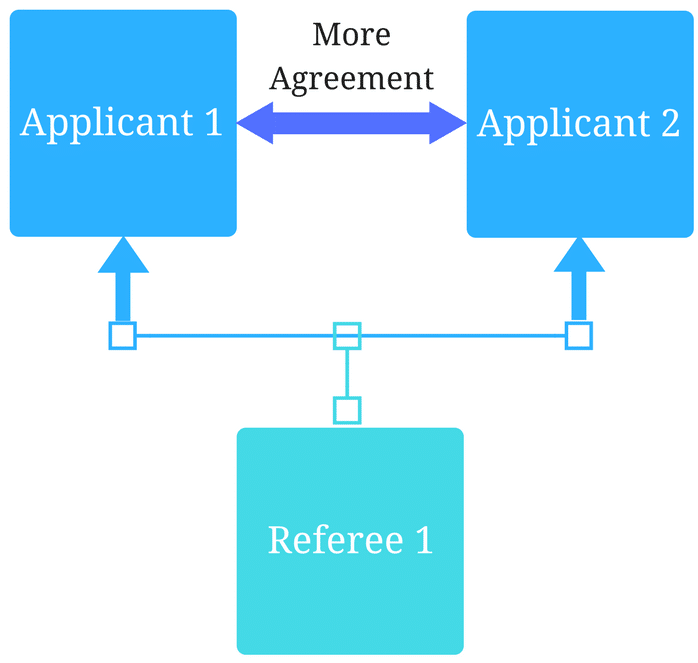Build or Buy? 6 factors to consider when deciding on a data warehouse for your med school

July 13, 2020
Having a complete picture of your medical school’s performance at any time is a critical, but difficult goal to accomplish. Data warehousing is key to solving this problem, but it’s no small feat to build. There are many steps required – from data collection, filtering, sanitizing, and shaping to permissioning, analyzing, and visualizing that data. With such a large undertaking, what factors should you consider when deciding whether to build or buy a solution?
1. Features
It’s no surprise that the determining factor between building versus buying often comes down to feature requirements. When considering building or buying, first ensure all your stakeholders agree on a prioritized list of requirements. Next, do a thorough comparison of existing solutions.
In general, consider buying when tried and tested platforms exist that provide at least 80 percent of your needs. Only consider building if you have a large number of requirements that no existing solutions meet.
2. Development resources
Development, quality assurance, and testing are labor-intensive and complex processes that require a dedicated team of highly skilled professionals. Take inventory – does your school have the people and data skills to build a warehouse and visualizations? Can your school commit to a dedicated team with at least one manager, one data scientist, and three software engineers for the lifetime of the warehouse? What contingencies are in place to keep this project going if key individuals leave with critical project knowledge? Can your school also commit to building a committee of institutional stakeholders responsible for governance, security, and managing requests for updates and improvements over time?
If you’re unable to secure the development resources necessary to begin developing a data warehouse, consider buying a pre-existing solution or find these services through the expertise of a third party.
3. Support and maintenance
Your data warehouse is one of the key drivers in understanding your institutional data. If it doesn’t function as expected, stakeholders will resort to manual processes of exporting data to perform ad-hoc analysis.
Once your data warehouse is up and running, you’ll require a dedicated team of in-house specialists to keep your critical business operations running smoothly, fix critical issues, and answer pressing questions. Don’t forget to budget for this often-overlooked factor when considering a custom build. Expect to budget three or more full-time employees based on the size of your school.
If you don’t have the budget for additional full-time employees, opt for a data warehouse maintained by a third-party solution.
4. Time
What is your school’s timeline to deliver a solution? Data warehouses come with many complex pieces, requiring more time and effort to develop than might be apparent. Couple this with the sobering fact that one in six IT projects take 70 percent more time than initially thought (Harvard Business Review), and it’s easy to see how quickly a project like this can balloon in size. Under ideal circumstances, expect custom-built solutions to take two to five years to be ready for use across your entire organization. Ensure your budget has significant contingencies for overruns and rework.
If you don’t want to wait years to gain insights from your data warehouse, consider partnering with an existing third-party solution.
5. Cost
Human resources and technology licenses are the biggest costs involved in any IT project. Expect software developer salaries of $100,000 (U.S. News) and annual licensing costs of $10,000 to $100,000. Factor into your budget that, on average, IT projects come in 30 percent over-budget, with one in six being three times over budget (Harvard Business Review). The risk factor is high for even a small data warehouse project to cost over $1 million before launch.
If your school has limited financial resources available, invest in a platform from a trusted partner.
6. Maintain the API connection
A data warehouse requires building and maintaining a rich set of application program interfaces (APIs) to enable a near real-time data sync with your school’s various software systems. Every time a third-party vendor updates their software, there is a risk that those connections might break. APIs require maintenance in order to avoid systems errors and interruptions to data flow.
Acuity Analytics helps eliminate data silos and power decision support with a turn-key data warehouse and dashboard system designed specifically for medical education. We manage, certify, deploy, and update a rich set of API connectors so integrating data from your various systems of record is quick and the data is mapped accurately. Acuity Analytics is an end-to-end SaaS solution backed by an expert services team to provide implementation, training, support, ongoing expansion and maintenance at a fraction of the cost to build and maintain your own data warehouse. Cost it out for yourself with our cost calculator below.
Cost Calculator: Build vs buy a data warehouse
Related Articles

How interviews could be misleading your admissions...
Most schools consider the interview an important portion of their admissions process, hence a considerable…
Reference letters in academic admissions: useful o...
Because of the lack of innovation, there are often few opportunities to examine current legacy…
